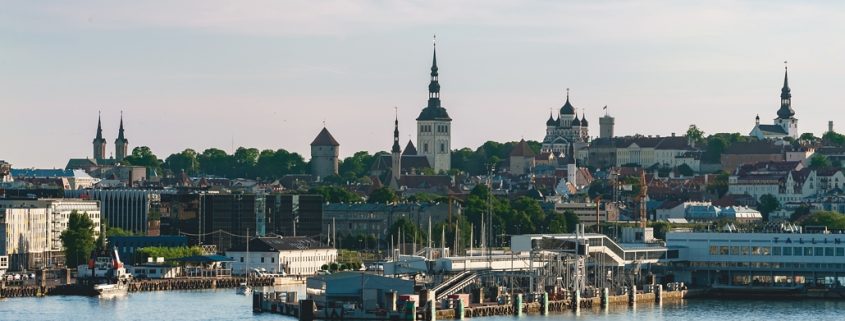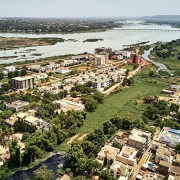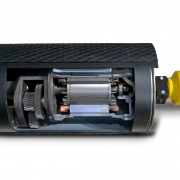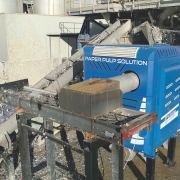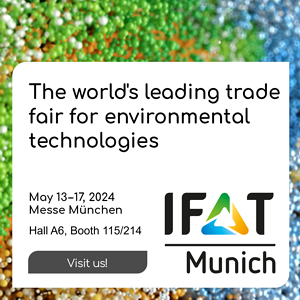Biological Waste Treatment in Estonia – First Steps Are Taken
Estonia shows great advancement in complying with EU waste legislation. In 2002 the national waste treatment was composed of 97 percent landfilling and 3 percent recycling. According to latest OECD figures, the recycling rate including recycling and composting reached 31 percent. 150 former non-EU-conform landfill sites were reduced to 5 sanitary landfills under operation. Since 2008, Estonia has implemented circa 100 recycling centers nationwide, separate collection systems of selected recyclable materials in the larger cities and a well-functioning deposit system for bottles and cans.
BMW rate already over-fulfilled
Estonia’s waste generation amounts to 473,000 tons; 434,000 tons i.e. 92 percent are treated. Meanwhile, the land scores a 59 percent incineration rate with energy recovery, 28 percent recycling and a landfilling rate below 10 percent. So besides thermal treatment the option to apply biological treatment from a sustainable source is given. Following the EU Landfill Directive, the amount of biodegradable municipal waste (BMW) in 1995 brought to landfill has to be reduced to 35 percent by 2020. As Estonia produced 317,000 tons of BMW in 1995, 117,000 tons recycled, 17,000 tons composted and 243,000 tons incinerated indicate that the country has already over-fulfilled the target. But the recycling rate of 50 percent of municipal solid waste has not yet been reached.
For the recovery of collected municipal solid waste, several plants have been installed in Estonia. Four plants with a total treatment capacity of 300,000 tons per year were brought into line in 2012. A MBT plant in Tallinn with 120,000 tons per year capacity, another MBT as part of the Talinn Recycling Center for 120,000 tons, an incineration plant in Talinn for 220,000 – 250,000 tons added, not to mention several, especially sorting plants dispersed over the country. The technical standard of the facilities is high, but the installation lacks of material. Instead of freshly mixed municipal waste, C&D and commingled waste was imported partly from Ireland to the Talinn MBT in August 2016. And the second Talinn MBT plant reaches an annual throughput of 24,000 tons – a fifth of its capacity.
Winter inhibits biological activity
Less than a quarter of Estonia – 45,000 hectare – is covered by semi-natural grassland. Because of preservation, it has to be kept short partly by mowing and baled. Due to the EU agriculture policy and the Estonian national legslation, currently for most of the bales there is no use. Besides that, this potential bio-waste as well as separately collected material can only partly be treated in composting plants. Biodegradable processes are sensitive to the ambient temperature, and in Estonia a long and cold winter period prevails inhibiting biological activity. Another potential sustainable energy source by biological treatment is the recovery of sewage sludge. The water treatment plants may work successfully, but the final handling of the digested sludge by open windrow composting was an issue. The winter temperatures forces the material to freeze and generated bad smell by de-freezing in spring. This can be changed by hygienisation prior to fermentation and open windrow composting with wood chips or peat after fermentation: The low biological activity eliminates smell problems, and the admixture of wood or peat improves the quality of the fertilizer. But the composted sludge is still classified as waste hampering farmers to use it. An unofficial draft of a law directing the application of end-of-waste criteria for sewage sludge might improve its utilization. So a certification system for compost could be available since 2016.
The EnReSS reseach network
In conclusion, Estonia is in the progress to establish integrated waste management. Since the operation of the Talinn waste incineration plant, the state-of-the-art equipped MBT plants are running under capacity or compensate the lacking input by importing waste. Caused by overcapacity, currently one of the five sanitary landfills is in the process of being closed. Provided that the incineration rate of municipal solid waste will remain higher than 50 percent, the recycling target is almost endangered. Potentials of bio-waste are offered by the grasland meadows and by sewage sludge. They could be treated if the freezing problems of open composting processes could be solved. However, the greatest capabilities are given by the MBT plants if a material flow management could be realized or available resource efficient technologies were adapted.
The Department of Processing and Recycling at the German RWTH Aachen and the Institute of Forestry and Rural Energeering at the Estonian University of Life Science have founded the “Energy Recovery from Sustainable Sources in cold climate“ (short: EnReSS reseach network). Their outlook for 2018: adapting a composting technology to Estonian conditions by small, flexible composting units with external heat supply. And – for material recovery – the separation of recyclables from municipal solid waste to improve recycling quota by installing a pilot plant for mechanical separation. The project is looking for interested technology providers or partners from different countries for the evaluation of technology transfer potential.
Photo: pixabay
GR 32017

